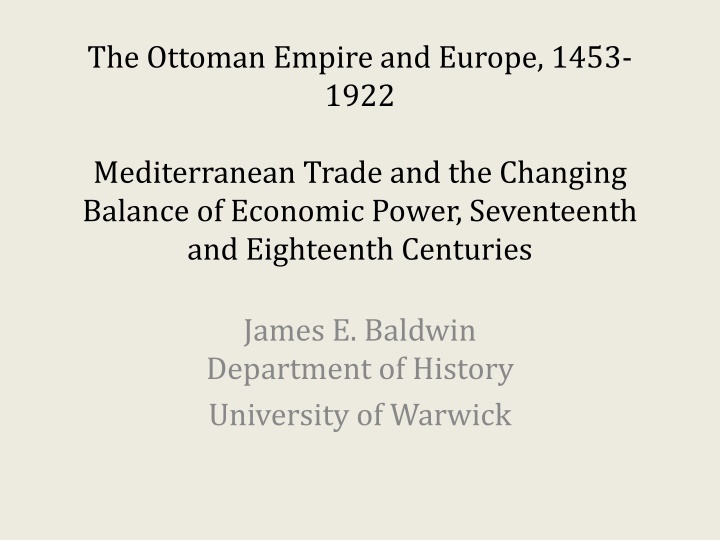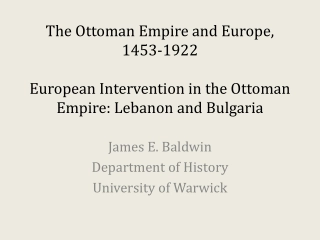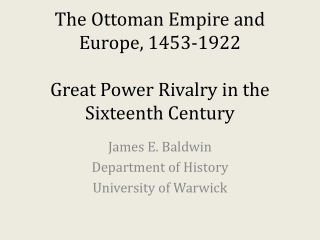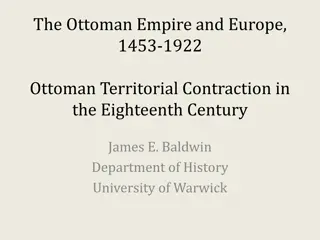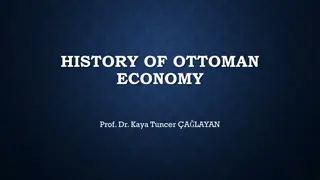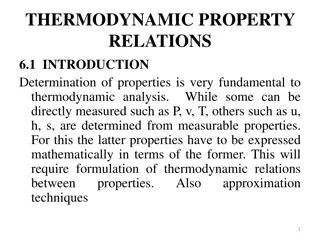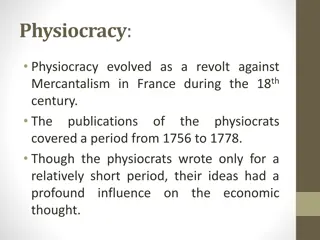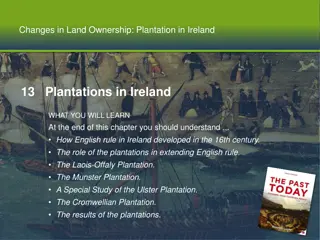Ottoman-European Economic Relations and Mercantilism in the 16th Century
The Ottoman Empire and Europe traded various goods in the 16th century, with a negative trade balance favoring the Ottomans. Institutional innovations like the Joint-Stock Company and the Levant Company emerged to facilitate trade and secure better terms. Mercantilist policies were implemented to regulate trade and protect domestic industries, emphasizing the need for a positive balance of trade. The Ottoman economic policy aimed at preserving tax revenues, even at the expense of favoring domestic production.
Download Presentation

Please find below an Image/Link to download the presentation.
The content on the website is provided AS IS for your information and personal use only. It may not be sold, licensed, or shared on other websites without obtaining consent from the author.If you encounter any issues during the download, it is possible that the publisher has removed the file from their server.
You are allowed to download the files provided on this website for personal or commercial use, subject to the condition that they are used lawfully. All files are the property of their respective owners.
The content on the website is provided AS IS for your information and personal use only. It may not be sold, licensed, or shared on other websites without obtaining consent from the author.
E N D
Presentation Transcript
The Ottoman Empire and Europe, 1453- 1922 Mediterranean Trade and the Changing Balance of Economic Power, Seventeenth and Eighteenth Centuries James E. Baldwin Department of History University of Warwick
Ottoman-European trade in the sixteenth century Ottoman exports to Europe: spices, pepper, coffee, dried fruits, cotton, silk, carpets. European exports to Ottoman Empire: paper, tin, cloth. Western Europe has a negative balance of trade with the Ottoman empire.
Institutional innovation The Partnership dissolved upon withdrawal or death of any partner. incentivizes small, short-term ventures to limit risk. The Joint-Stock Company shares can be sold and inherited, so company remains intact when a partner withdraws or dies. facilitates larger enterprises with indefinite time horizons.
The Levant Company English joint-stock company formed to trade in the Ottoman Empire. Formed in 1581, lasted until 1825. Initially involved 53 merchants; a century later had 200. Size and longevity allowed it to secure better prices, employ representatives to negotiate better terms, pay for armed protection from pirates and bandits.
Mercantilism Government should seek a positive balance of trade. Grant monopolies to trading companies such as the Levant Company. Impose tariffs to protect domestic industry from imports. Encourage exports.
Ottoman economic policy Preserve tax revenues, even if that meant privileging imports over domestic production. Secure provisions for Constantinople, which often meant prohibiting exports. Encouraging imports and discouraging exports was the opposite of the mercantilist approach.
The Capitulations Legal agreements setting out terms on which Europeans could trade in the Ottoman Empire. Granted to France, England and the Dutch Republic during the sixteenth and seventeenth centuries. Intended to encourage trade by improving standards of justice and providing certainty on taxes. As Ottoman Empire weakened during the eighteenth century, exploited by Europeans to gain immunity from Ottoman taxes and courts.
